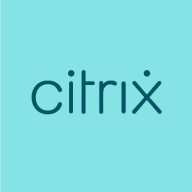


Citrix Endpoint Management and IBM MaaS360 are competing products in mobile device management. Citrix Endpoint Management seems to have the upper hand in pricing and support, offering a better user experience at lower costs, whereas IBM MaaS360 shines with its robust feature set.
Features: Citrix Endpoint Management offers an intuitive management interface, seamless integration with Citrix products, and comprehensive security for enterprise mobility. IBM MaaS360 provides AI-driven productivity tools, extensive device management options, and the ability to manage corporate data in a secure application container.
Room for Improvement: Citrix Endpoint Management could expand its AI capabilities, offer more third-party integrations, and enhance analytics tools. IBM MaaS360 could simplify its deployment process, reduce its pricing model complexity, and improve integration with non-IBM services.
Ease of Deployment and Customer Service: Citrix Endpoint Management is known for straightforward deployment and comprehensive support, making setup simple. IBM MaaS360 has a more complex deployment process, but its responsive customer service efficiently addresses challenges.
Pricing and ROI: Citrix Endpoint Management is cost-effective, balancing features and support at a lower price for favorable ROI. IBM MaaS360, with potentially higher setup costs, offers a long-term investment due to its advanced features that promise better ROI over time.
Everything we've gained from it makes my job easier day after day, and I see value in it as an engineer.
Microsoft Intune not only saves costs by reducing the number of personnel needed but also offers a comprehensive solution for managing laptops, applications, security, individual access, and enrollment.
Importantly, when someone leaves the company, it helps protect document access on their devices.
After implementing Citrix Endpoint Management, there is a return on investment for my customers because we provide three services: first is the license, where we got margin; second, deployment service, which typically has two types—one where Citrix will do the deployment and the other where a partner should do it, and we deploy this solution for about 80% of the customers in India; third is after deployment support.
When a support ticket is submitted, it directly reaches someone with Intune support expertise.
When I contacted Microsoft, they had the same expertise, if not more, which is phenomenal because I felt heard and my problem was solved.
Sometimes, the support provided is excellent, and the representative is knowledgeable, while other times, the service needs improvement.
Technical support for Citrix Endpoint Management is not satisfactory.
This product requires some mature understanding, so sometimes they can handle small problems, but for major or architecture-related issues, their L3 or our L3 engineer helps them understand the problem.
The support from Citrix has been satisfactory.
IBM's support and technical service were helpful when needed.
The scalability of Microsoft Intune is ten out of ten.
Ideally, we want to automatically segregate devices based on user properties like primary use, but currently, dynamic groups seem limited to device properties.
It supports organizations with 200 endpoints and those with more than 15,000 endpoints.
My colleagues using iOS have faced issues, such as logging problems requiring frequent password entries.
We have not experienced downtime, bugs, or glitches.
It appears Microsoft Intune undergoes changes without informing customers.
Microsoft Intune has been very stable.
The solution's stability is below expectations.
The solution is stable, though there are occasional restarts, which are not critical.
Features like unlocking devices sometimes fail, and the support offered for other operating systems is insufficient.
There are communication issues, so you might start working with a feature without knowing if it will be deprecated six months from now.
Many third-party companies offer single-pane-of-glass reporting that shows you what your update environment looks like, how your patch is doing, application status, etc., but Intune's reporting is not intuitive.
The main issue is the change from perpetual licenses to subscription-based ones, which has increased our costs significantly.
With AI being present, they may increase some AI-related features in the future.
The units are not updating the operating system as specified in the policy.
Introductory professional services, like a fast-track service, were included with our E5 membership, and there have been no additional costs.
The Intune suite and add-ons, such as batch management and remote help, are costly.
It costs approximately forty euros per user per month.
The switch to subscription-based licensing has made it much more expensive.
For this client, the solution has been quite cheap.
The setup cost pricing for Citrix Endpoint Management varies; I can say $3,000 per user license for setup.
The pricing and licensing experience with IBM MaaS360 was satisfactory and not expensive.
Intune excels in configuration and compliance management for Windows 10, ensuring devices receive timely updates and adhere to organizational standards.
Dynamic groups allow us to set conditions for automatic membership, eliminating the need for user intervention or manual review and ensuring a seamless workflow.
Windows Autopatch is the most valuable because it removes the burden of patch management.
We have found the ability to manage user accounts on shared devices valuable as it reduces the need for multiple licenses, which saves costs.
The change to a subscription-based model has removed the financial benefit we previously had.
The main benefit of IBM MaaS360 is phone control and rollout.
| Product | Market Share (%) |
|---|---|
| Microsoft Intune | 30.5% |
| IBM MaaS360 | 6.2% |
| Citrix Endpoint Management | 1.9% |
| Other | 61.4% |



| Company Size | Count |
|---|---|
| Small Business | 116 |
| Midsize Enterprise | 46 |
| Large Enterprise | 152 |
| Company Size | Count |
|---|---|
| Small Business | 6 |
| Midsize Enterprise | 3 |
| Large Enterprise | 5 |
| Company Size | Count |
|---|---|
| Small Business | 20 |
| Midsize Enterprise | 7 |
| Large Enterprise | 12 |
Microsoft Intune provides centralized management of mobile devices and applications, ensuring security, compliance, and productivity through integration with Microsoft services like Microsoft 365 and Azure Active Directory.
Organizations use Intune for managing mobile devices and applications, enhancing security and compliance across platforms. With features like single sign-on, conditional access, and zero-touch deployment via Autopilot, it facilitates efficient operations. Intune's scalability, easy enrollment, and capabilities such as remote wipe support diverse device management, offering robust data protection and efficient operation. Despite its features, improvement areas include reporting, compatibility with non-Microsoft devices, and better support for macOS and Linux devices.
What are the key features of Microsoft Intune?
What benefits should users look for in reviews?
In industries such as finance, healthcare, and education, Microsoft Intune is implemented to ensure secure and compliant device management. Companies leverage its capabilities to deploy security policies and manage both corporate-owned and BYOD environments, facilitating a unified approach to data protection and compliance.
XenMobile is a comprehensive solution to manage mobile apps, data and devices, available both on-premises and in the cloud. Users have single-click access to all of their apps from a unified corporate app store and IT can easily configure, secure and support mobile devices. With XenMobile technology, IT can meet their compliance and control needs while giving users the freedom to experience work and life their way.
IBM MaaS360 is an EMM solution that allows you to configure devices for enterprise access and protect corporate data on smartphones and tablets – all from a single screen. As a robust integrated cloud platform, MaaS360 simplifies mobile device management (MDM) with visibility, rapid deployment, and control that spans across apps, mobile devices, and data. It also secures apps, laptops, smartphones, tablets, wearables, desktops, the Internet of Things (IoT) devices, and data so you can rapidly scale your remote workforce and bring your own device (BYOD) initiatives.
IBM MaaS360 can help you build a zero-trust strategy with modern device management. Deployment is so fast that in just a few clicks, IT admins can start enrolling devices and quickly manage the entire mobile device lifecycle. They can do everything from enrollment to enterprise integration, support, configuration and management, monitoring and security, analytics, and reporting.
IBM MaaS360 Features
IBM MaaS360 has many valuable key features. Some of the most useful ones include:
IBM MaaS360 Benefits
There are many benefits to implementing IBM MaaS360. Some of the biggest advantages the solution offers include:
Reviews from Real Users
MaaS360 stands out among its competitors for a number of reasons. Some of these include its mobile device and laptop management, robust security, and complete sync with Active Directory. PeerSpot users take note of the advantages of these features in their reviews:
Claudia G., a Cybersecurity Consultant at Telefónica, mentions, “My customers value the ability to control all their devices from a central point in IBM MaaS360. I rate IBM MaaS360 a nine out of ten.”
Okoro A.., a CEO at a ITANDT Solutions Limited notes, “The most valuable features are mobile device management and security (which allows you to quarantine infected devices).”
We monitor all Unified Endpoint Management (UEM) reviews to prevent fraudulent reviews and keep review quality high. We do not post reviews by company employees or direct competitors. We validate each review for authenticity via cross-reference with LinkedIn, and personal follow-up with the reviewer when necessary.